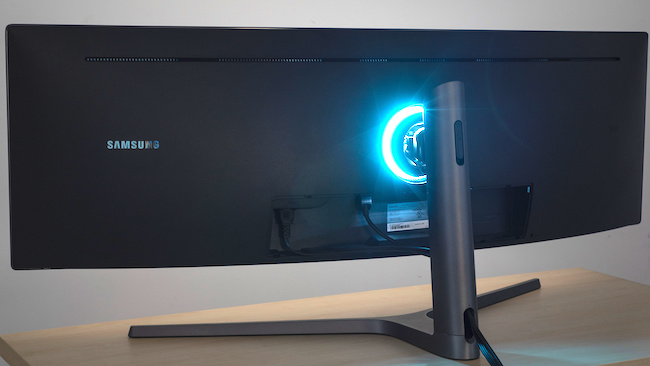
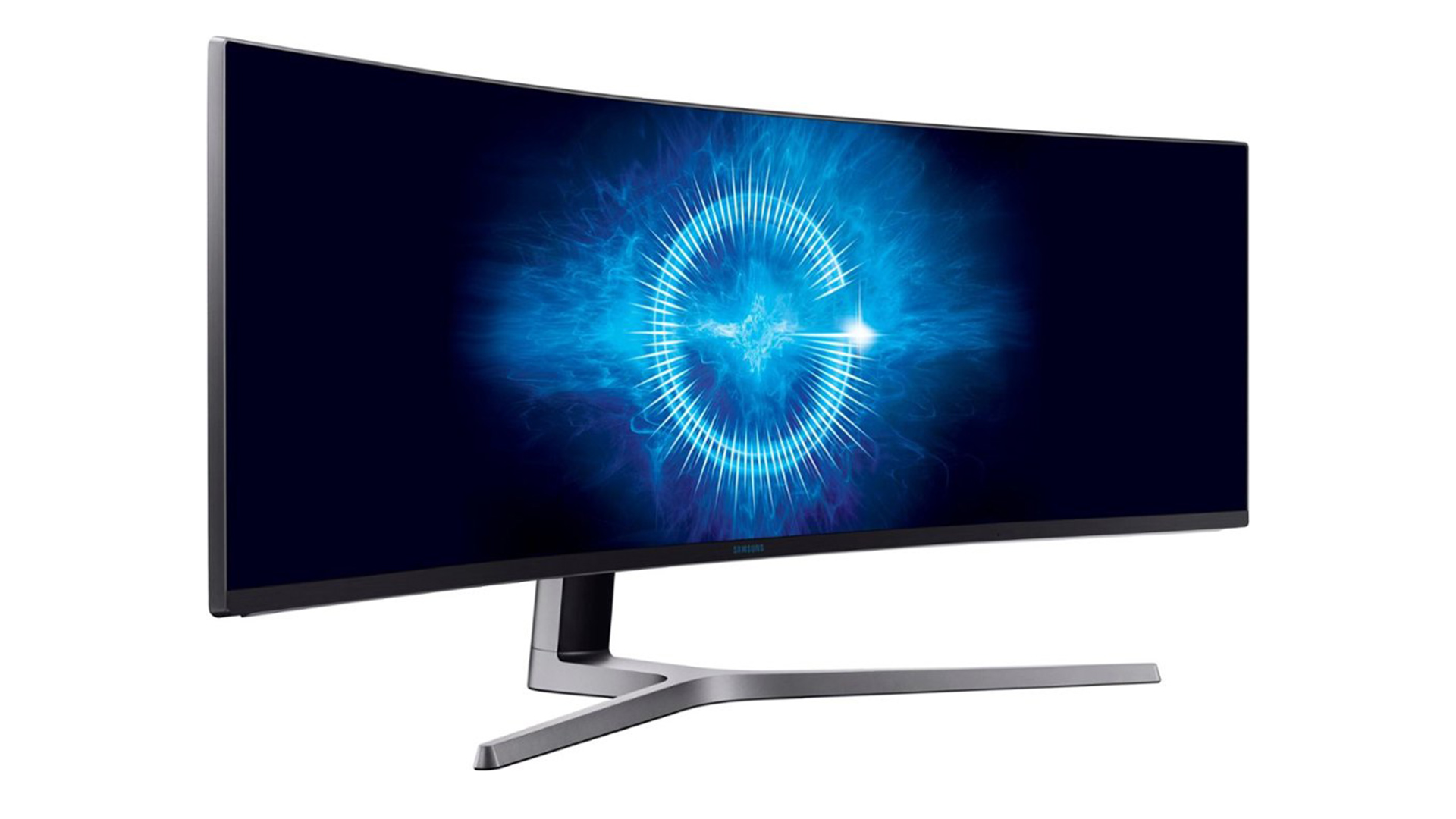
Review: If you need some serious screen real estate and 10-bit colour accuracy, the Samsung CHG90 monitor might be just what you're looking for.
It’s not a “tellie”! This is a constant uphill battle I have waging against a good buddy of mine who pokes fun at the fact that I am using a “Gaming Monitor” for my postproduction workflows. Lets be real though, in a world of trickle down technology, the labels are beginning to blur. While I’m no professional colorist by any stroke of the imagination, my color has taken a substantial leap since adopting this product. It’s been a year now since I’ve purchased the Samsung 49” CHG90 QLED (or CHG90 for short) into my studio, and like many of my purchases I don’t know how I lived without it. Lets get something straight, this isn’t a technical review in the traditional sense, but rather a laymen’s review with practical application.
Technical Overview
This monitor is no slouch. Its headline tech specs immediately grabbed my attention. The CHG90 is a 49” wide, QLED paneling with a refresh rate of 144 Hz, 10-bit color depth, and HDR capabilities with a Rec.2020 DCI-P3 gamut. The monitor has two (2) HDMI 2.1 ports, one (1) full DisplayPort, one (1) Mini DisplayPort, one (1) 3.5mm Audio-in, one (1) headphone jack, and three (3) USB 3.0 ports. The monitor also comes with it’s “FreeSync” technology built in to reduce flickering or graphic tearing from certain AMD cards, and now supported NVIDIA cards with an optional driver.
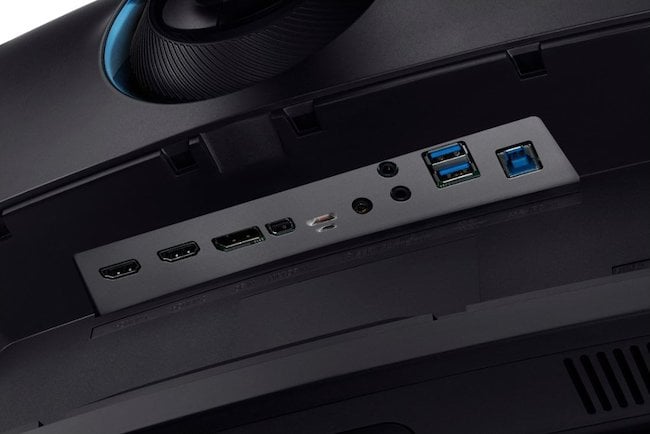
Coming in at a super sleek 32:9, the CHG90 has a native resolution of 3840 x 1080. This in practice feels more like two HD monitors side by side, but have enough clarity with a viewing distance of 1-3 feet to feel “crisp”. The lack of vertical resolution or super sleek aspect ratio (glass half empty / half full?) can require a bit of an eye adjustment if you are trying to view standard consumer resolutions (3840 x 2160)/aspect ratios (16:9) but your eyes will adapt. The CHG90 will scale your media upon “full screen” accordingly to the center of the monitor, pillar-boxing your image to the left and right of the screen’s deadspace. For me, this isn’t really an issue as the majority of the content I’ve been creating, and even consuming, as of late has been 2.40:1 or 2.35:1 cinemascope.
The Best Viewing Experience
It took me a little while to dial in all of the setting profiles, but I really have it honed in to be as accurate as possible. The monitor does come pre-calibrated with all the appropriate documentation, but I found this tuned more for a consumer experience. From a consumption standpoint, when material has been shot in anamorphic, or cropped or output to cinemascope, this is where the CHG90 really comes to life. They say you need a curved screen to truly experience or take full advantage cinemascope’s horizontal width. Now having used the CHG90, I tend to agree with this assessment. Your material will fill the majority of the monitor depending on the aspect, and your eyes will perceive the content’s field of view in sort of an IMAX like experience with a viewing distance of 1.5 – 2FT. It just wraps around you, and its hard to explain.
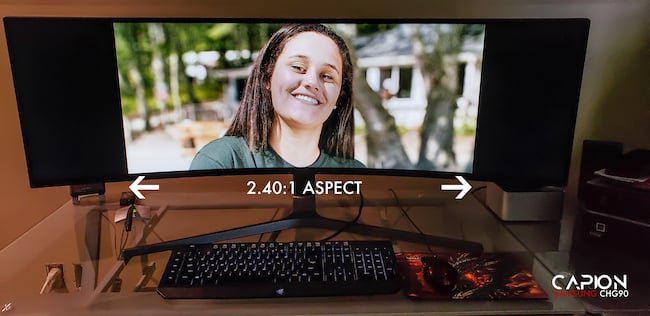
The other thing that is great about this monitor is turning on Local Dimming to kick HDR into gear, or just to dig deep into your shadows. With an overall 300 NIT value, the monitoring isn’t at the peak of HDR technology, but its enough to effectively “pass the bar”. Even when displaying REC709 content I find myself pushing the monitor into its high bright mode to look at my shadows to effectively “clean them up”. Yes, they are being boosted in their luminance range if they are on a REC709 project, but it’s a resourceful way in conjunction with my scopes to visually make sure they are off the noise floor.
Viewing angles are another controversial subject when talking about this monitor. The center cut of the screen is going to give you the most accurate representation of color, but with all curved panels, as you move to the sides depending on your angle, you might perceive the tiniest color shift. This is why it’s important to have an additional monitor alongside the CHG90 as your dedicated “grade canvas”. Personally, I’m giving a strong look at the Atomos Neon 17” for this very reason. Alternatively you could position your grade canvas towards the center of the CHG90 depending on your NLE setup.
Productivity To The Max!
This monitor’s productivity level is bar none. Being so wide, this monitor has tons of real estate to work with. You can allocate a massive timeline, power window multiple applications at a once, or even run several browser windows simultaneously. As a business owner, this is a dream come true. For Premiere, I can have everything on my screen at once from my scopes, to browser windows, to my effects panel, a big timeline, and most importantly my project canvas. I now find it difficult to switch over to friend’s or agency’s systems with standard 16:9 boxy frame. For this feature alone, this most definitely scores a 10 out of 10 for me.

Lots of screen real-estate
Conclusion
So a conclusion… well hey, its not perfect, but nothing ever is right? Is it a sight to behold? Absolutely! Everyone who has ever at with me in the edit for the first time have certainly been floored by its presence. I believe the major take away here is that the CHG90 is a fantastic mid range monitor that under the right conditions will yield acceptable color/gamma/contrast levels (once dialed in). When you pair this with a dedicated grade display, I believe you have a home run. If you don’t believe me, take a look at some of my most recent work with it, or see it in stores if you have the opportunity. Something to note is that its successor the CRG9 is on the horizon, so if you’re seeking higher resolutions, some of these assessments might be applicable to the updated model. For now however, the CHG90 gets a big thumbs up for the everyday power user. Now if only someone could just create that Minority Report screen I’m sure that’d be a huge success! The Samsung CGH90 costs £998.
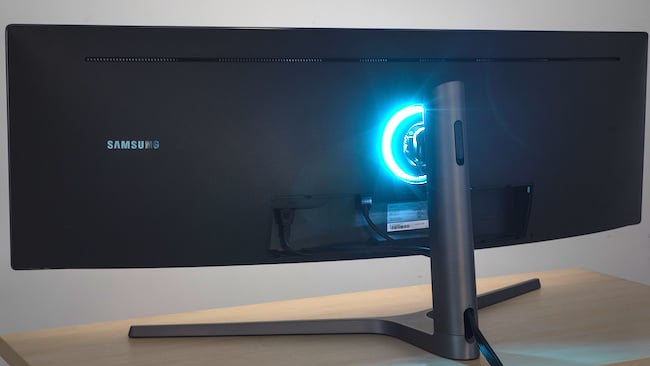
Tags: Technology


Comments